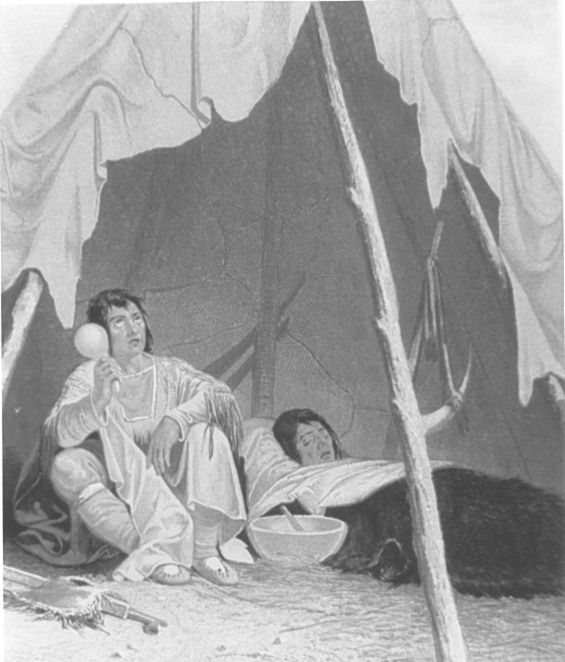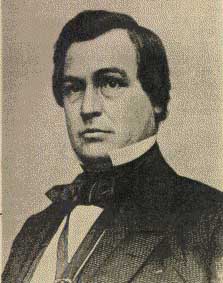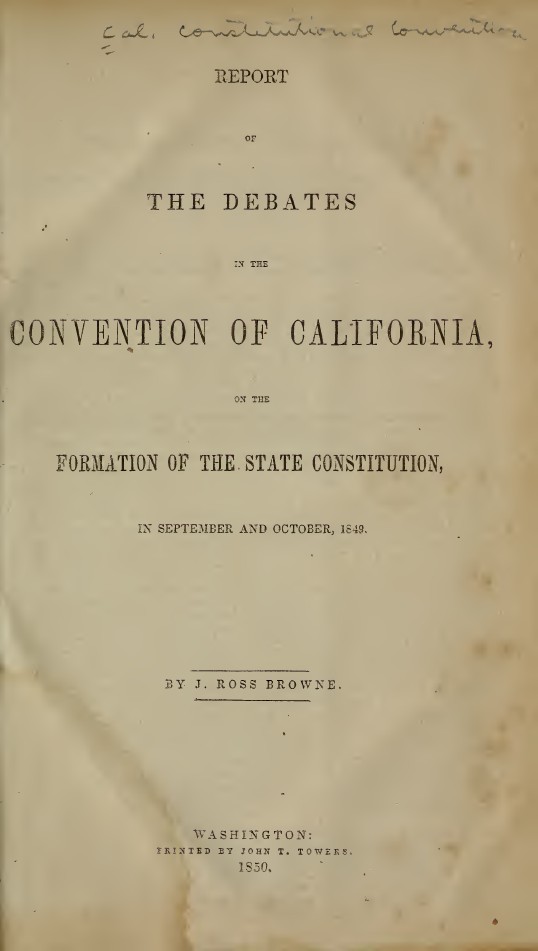|
Population Of Native California
The population of Native California refers to the population of Indigenous peoples of California. Estimates prior to and after European contact have varied substantially. Pre-contact estimates range from 133,000 to 705,000 with some recent scholars concluding that these estimates are low. Following the arrival of Europeans in California, disease and violence—termed the California Genocide—reduced the population to as low as 25,000. During and after the California Gold Rush, it is estimated that miners and others killed about 4,500 Indigenous people of California between 1849 and 1870. As of 2005, California is the state with the largest self-identified Native American population according to the U.S. Census at 696,600. Pre-contact estimates Historians have calculated the Native Californian population prior to European entry into the region using a number of different methods, including: * Mission records (births, baptisms, deaths, and total numbers of neophytes at pa ... [...More Info...] [...Related Items...] OR: [Wikipedia] [Google] [Baidu] |
Native California Population Graph
Native may refer to: People * '' Jus sanguinis'', nationality by blood * '' Jus soli'', nationality by location of birth * Indigenous peoples, peoples with a set of specific rights based on their historical ties to a particular territory ** Native Americans (other) In arts and entertainment * Native (band), a French R&B band * Native (comics), a character in the X-Men comics universe * ''Native'' (album), a 2013 album by OneRepublic * ''Native'' (2016 film), a British science fiction film * ''The Native'', a Nigerian music magazine In science * Native (computing), software or data formats supported by a certain system * Native language, the language(s) a person has learned from birth * Native metal, any metal that is found in its metallic form, either pure or as an alloy, in nature * Native species, a species whose presence in a region is the result of only natural processes * List of Australian plants termed "native", whose common name is of the form "native . . ." ... [...More Info...] [...Related Items...] OR: [Wikipedia] [Google] [Baidu] |
Pre-Columbian
In the history of the Americas, the pre-Columbian era, also known as the pre-contact era, or as the pre-Cabraline era specifically in Brazil, spans from the initial peopling of the Americas in the Upper Paleolithic to the onset of European colonization of the Americas, European colonization, which began with Christopher Columbus's voyage in 1492. This era encompasses the history of Indigenous peoples of the Americas, Indigenous cultures prior to significant European influence, which in some cases did not occur until decades or even centuries after Columbus's arrival. During the pre-Columbian era, many civilizations developed permanent settlements, cities, agricultural practices, civic and monumental architecture, major Earthworks (archaeology), earthworks, and Complex society, complex societal hierarchies. Some of these civilizations had declined by the time of the establishment of the first permanent European colonies, around the late 16th to early 17th centuries, and are know ... [...More Info...] [...Related Items...] OR: [Wikipedia] [Google] [Baidu] |
Former Native American Populated Places In California
A former is an object, such as a template, gauge or cutting die, which is used to form something such as a boat's hull. Typically, a former gives shape to a structure that may have complex curvature. A former may become an integral part of the finished structure, as in an aircraft fuselage, or it may be removable, being used in the construction process and then discarded or re-used. Aircraft formers Formers are used in the construction of aircraft fuselage, of which a typical fuselage has a series from the nose cone to the empennage, typically perpendicular to the longitudinal axis of the aircraft. The primary purpose of formers is to establish the shape of the fuselage and reduce the column length of stringers to prevent instability. Formers are typically attached to longerons, which support the skin of the aircraft. The "former-and-longeron" technique (also called stations and stringers) was adopted from boat construction, and was typical of light aircraft built until t ... [...More Info...] [...Related Items...] OR: [Wikipedia] [Google] [Baidu] |
Native American History Of California
Native may refer to: People * '' Jus sanguinis ( or , ), meaning 'right of blood', is a principle of nationality law by which nationality is determined or acquired by the nationality of one or both parents. Children at birth may be nationals of a particular state if either or both of thei ...'', nationality by blood * '' Jus soli'', nationality by location of birth * Indigenous peoples, peoples with a set of specific rights based on their historical ties to a particular territory ** Native Americans (other) In arts and entertainment * Native (band), a French R&B band * Native (comics), a character in the X-Men comics universe * ''Native'' (album), a 2013 album by OneRepublic * ''Native'' (2016 film), a British science fiction film * '' The Native'', a Nigerian music magazine In science * Native (computing), software or data formats supported by a certain system * Native language, the language(s) a person has learned from birth * Native metal, any metal ... [...More Info...] [...Related Items...] OR: [Wikipedia] [Google] [Baidu] |
Bibliography Of California History
This is a bibliography of California history. It contains English language (including translations) books and mainstream academic journal articles published after World War II. About Inclusion criteria This list is not intended to be a comprehensive list of all works about California history. It is limited to works primarily or substantially about California history, published by state level or higher academic universities, mainstream national level publishers, or authored by recognized subject matter experts. Works about Baja California before 1850 are included. Works regarding historical geography, and California's natural history are included, but works about municipal and local history are excluded. Notes are provided for annotations and citations for reviews in academic journals when helpful. Citation style This bibliography uses APA style citations. Entries do not use templates. References to reviews and notes for entries do use citation templates. Where books which are onl ... [...More Info...] [...Related Items...] OR: [Wikipedia] [Google] [Baidu] |
California Mission Clash Of Cultures
California () is a state in the Western United States that lies on the Pacific Coast. It borders Oregon to the north, Nevada and Arizona to the east, and shares an international border with the Mexican state of Baja California to the south. With almost 40million residents across an area of , it is the largest state by population and third-largest by area. Prior to European colonization, California was one of the most culturally and linguistically diverse areas in pre-Columbian North America. European exploration in the 16th and 17th centuries led to the colonization by the Spanish Empire. The area became a part of Mexico in 1821, following its successful war for independence, but was ceded to the United States in 1848 after the Mexican–American War. The California gold rush started in 1848 and led to social and demographic changes, including California genocide, depopulation of Indigenous tribes. It organized itself and was California Statehood Act, admitted as ... [...More Info...] [...Related Items...] OR: [Wikipedia] [Google] [Baidu] |
Mission Indians
Mission Indians was a term used to refer to the Indigenous peoples of California who lived or grew up in the Spanish mission system in California. Today the term is used to refer to their descendants and to specific, contemporary tribal nations in California. History Spanish explorers arrived on California's coasts as early as the mid-16th century. In 1769, the first Spanish Franciscan mission was built in San Diego. Local tribes were relocated and conscripted into forced labor on the mission, stretching from San Diego to San Francisco. Disease, starvation, excessive physical labor, and torture decimated these tribes.Pritzker, 114 Many were baptized as Catholics by the Franciscan missionaries at the missions. Mission Indians were from many regional Native American tribes; their members were often relocated together in new mixed groups, and the Spanish named the Indian groups after the responsible mission. For instance, the Payomkowishum were renamed '' Luiseños'', after ... [...More Info...] [...Related Items...] OR: [Wikipedia] [Google] [Baidu] |
Population History Of Indigenous Peoples Of The Americas
Population figures for the Indigenous peoples of the Americas before European colonization have been difficult to establish. Estimates have varied widely from as low as 8 million to as many as 100 million, though by the end of the 20th Century, many scholars gravitated toward an estimate of around 50 million people. The monarchs of the nascent Spanish Empire decided to fund Christopher Columbus' voyage in 1492, leading to the establishment of colonies and marking the beginning of the migration of millions of Europeans and Africans to the Americas. While the population of European settlers, primarily from Spain, Portugal, France, England, and the Netherlands, along with African slaves, grew steadily, the Indigenous population plummeted. There are numerous reasons for the population decline, including exposure to Eurasian diseases such as influenza, pneumonic plagues, and smallpox; direct violence by settlers and their allies through war and forced removal; and the general ... [...More Info...] [...Related Items...] OR: [Wikipedia] [Google] [Baidu] |
Nadir
The nadir is the direction pointing directly ''below'' a particular location; that is, it is one of two vertical directions at a specified location, orthogonal to a horizontal flat surface. The direction opposite of the nadir is the zenith. Etymology Although it entered English via other European languages, the word “nadir” is ultimately an Arabic loanword. It comes from the Arabic word “nazir”, meaning “opposite to”. More specifically, it originated from the Arabic phrase “nazir as-samt”, meaning “ heopposite direction”. Hebrew (whether ancient or modern) is a related language to Arabic, as they are both Semitic languages. Hebrew also has a word “nadir” (נדיר), but with a somewhat different meaning: it is an adjective meaning “rare”. However, the same word also has a specialized usage to match its meaning in other languages like English. Definitions Space science Since the concept of ''being below'' is itself somewhat vague, scientists define ... [...More Info...] [...Related Items...] OR: [Wikipedia] [Google] [Baidu] |
Ed Castillo
Edward D. Castillo, of the Luiseño- Cahuilla tribes, is a Native American activist who participated in the American Indian occupation of Alcatraz in 1969. Former professor and director of Native American Studies at the Sonoma State University in California, he wrote several chapters in the Smithsonian Institution's ''Handbook of North American Indians'' and ''Mission Indian Federation: Protecting Tribal Sovereignty 1919-1967'', published in the ''Encyclopedia of Native Americans'' in the 20th century. He is the editor of Native American Perspectives on the Hispanic Colonization of Alta California and The Pomo, A Tribal History. Castillo was a regular contributor of book reviews to historical journals such as Indian Historian, Journal of California Anthropology, Western Historical Quarterly, American Indian Quarterly, and California History. Early life Castillo was born in 1948 in California to Edward and Betty Castillo and has two brothers Billy and Randy. He was raised on a ... [...More Info...] [...Related Items...] OR: [Wikipedia] [Google] [Baidu] |
California Secretary Of State
The secretary of state of California is the chief clerk of the U.S. state of California, overseeing a department of 500 people. The Secretary of state (U.S. state government), secretary of state is elected for four year terms, like the state's other List of California state constitutional offices, constitutional officers; the officeholder is restricted by term limits to two terms. The current secretary of state is Shirley Weber, who assumed the role in 2021 after Alex Padilla's appointment to the US Senate. Duties Elections The secretary of state is California's chief elections officer, overseeing all federal and state elections in the state and maintaining a database of registered voters. The officeholder is also responsible for disclosure of campaign and lobbyist financial information, under the California Political Reform Act of 1974. Corporations The Office of the Secretary of State has a number of responsibilities related to corporations; the largest portion office is the ... [...More Info...] [...Related Items...] OR: [Wikipedia] [Google] [Baidu] |
John Ross Browne
John Ross Browne (February 11, 1821 in Beggars Bush, Dublin, Ireland – December 9, 1875 in Oakland, California), often called J. Ross Browne, date of birth sometimes given as 1817, was an Irish-born American traveler, artist, writer and government agent. In the late 1970s, Ralston Purina opened a chain of seafood restaurants named after Browne, called ''J Ross Browne's Whaling Station''. Biography John Ross Browne was the third of seven children born to Thomas Egerton Browne, an Irish newspaper editor, and his wife, Elizabeth (Buck) Browne. Thomas Browne was an ardent nationalist who ran afoul of the Dublin Castle administration and was sent to prison, but released on condition of his leaving Ireland. In 1833 the family emigrated to the United States.J. Ross Browne Collection Online Archive of California, accessdate ... [...More Info...] [...Related Items...] OR: [Wikipedia] [Google] [Baidu] |




